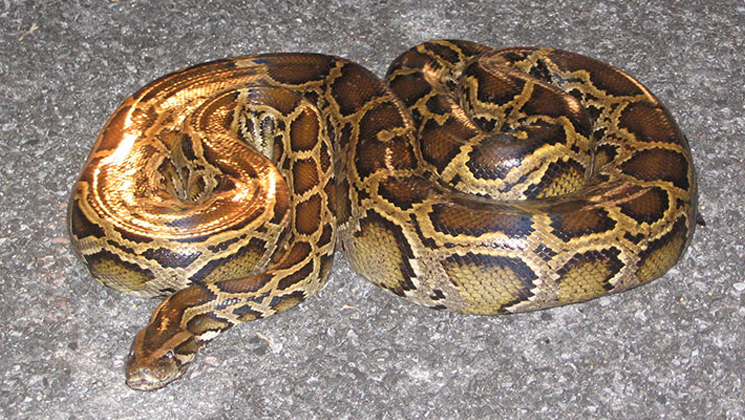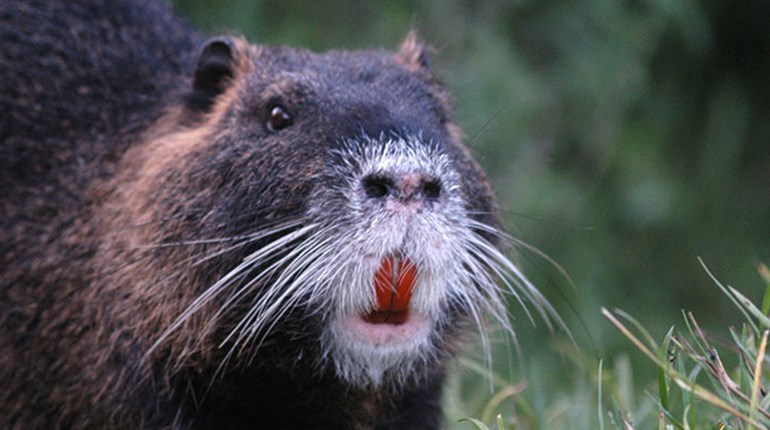
If you’re ever lucky enough to visit the Florida Everglades, there’s a slithery, scaly new reason to keep a very sharp eye out…you might just see a Burmese python. This species is not native to North America; as you can guess from its name, these massive reptiles originally hail from Burma, China, Thailand and other parts of Asia. And we do mean massive—the Burmese python is the largest subspecies of the Indian python, and among the top six largest snakes in the world. It’s common for them to grow as long as 15 feet in the wild, 22 feet in captivity, and they can weigh up to 200 pounds. Even when they haven’t eaten recently, they can easily be as big around as a telephone pole.
What is this massive snake doing in the Everglades, then? Well, for many years, the Burmese python was a very popular pet. The problem is that they’re not only good at escaping, they’ve also got a tendency to grow much larger than some people can manage. As these animals either got or were turned loose, they learned that the Everglades is actually quite well-suited to them. In ones and twos, they weren’t such a problem, but when a nest of eggs was discovered in 2007, wildlife biologists realized that they were breeding in the wild…and started to get concerned. It is believed that the pythons are responsible for reduced populations of deer and medium-sized game in the delicate Everglades ecosystem.
These days, any Florida resident with a hunting license and $26 can hunt these animals on four areas of land around the Everglades. For more information, click here.
FAST FACTS:
• Burmese pythons can lay up to 100 eggs at a time, in what’s called a “clutch.”
• Unlike most snakes, female pythons stay with their eggs until they hatch. They don’t eat during this time, which may be as long as 2 months.
• Burmese pythons can live up to 30 years.







































